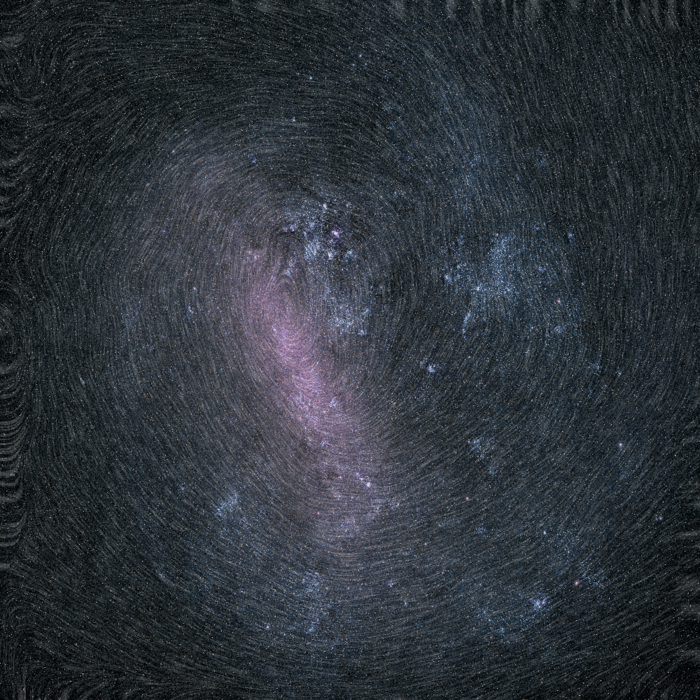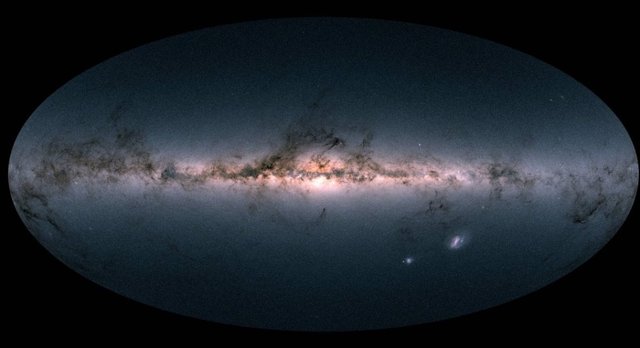
The second set of data collected by Gaia's spacecraft was published on Tuesday. Highly precise measurements made it possible to catalogue almost 1.7 billion stars and thousands of asteroids. Thanks to this, scientists are able to learn more about the nature of the Milky Way and its immediate, constantly changing environment.
The mission began in 2013, when the Gaia probe was launched into space on board a Soyuz-STB rocket that delivered it to a transfer orbit. In the first half of January 2014, the Observatory reached its final orbit around the liberation point L2, 1.5 million kilometres from Earth. Positioned at L2, the probe provides constant access to the sun's rays needed to produce energy, as the sun is never covered by the planet. A special cover prevents the equipment from overheating and keeps it at a constant temperature of -110 degrees Celsius.
The first publication of the data collected by the Gaia probe took place in 2016. It contained the most accurate 3D maps of the Milky Way in history - the position and brightness of 1.1 billion stars was precisely determined. The latest data publication is even more groundbreaking. It includes observations from the period between 25 July 2014 and 23 May 2016, and the data collected are much more accurate than the previous ones. The brightness and position of 1.7 billion stars, the movement and color of 1.3 billion stars and a number of additional parameters for smaller subset of stars and other celestial objects have been determined.
What's more, the published data includes information on how the brightness and colour of 500 million variable stars change, or the surface temperature of about 100 million stars. The effect of interstellar dust on about 87 million of them was also studied.
Gaia observes more than just stars. The published data includes 14,000 known asteroids circulating in the Solar System, which allow to determine their orbit with greater accuracy than before. Future publications are expected to consist of even more information about this cosmic debris, which could be potentially dangerous for the Earth.
It is not the end of discoveries made by the probe. The Observatory catalogued about half a million distant quasars. Quasars are used to define the coordinates of all objects in the Gaia directory.
The diagram of Hertzsprung-Russell, which was named after the two astronomers who developed it at the beginning of the 20th century, was also presented. It enables the brightness of the stars to be compared with their colour, which is the basic tool for studying the population of stars and their evolution.
A new version of this diagram, based on the four million stars that have been removed over a period of 5,000 light years - selected from Gaia's catalogue - reveals many small details for the first time. The location of different kinds of white dwarfs - dead remnants of stars similar to the Sun - is shown. The diagram makes it possible to distinguish between those with hydrogen rich cores and those with helium predominating.
Combined with Gaia's star speed measurements, the graph enables astronomers to distinguish between different populations of stars of different ages that are located in different areas of the Milky Way, such as the disc and the halo.
The equipment on board the probe is so precise that it was possible to measure the movement of stars not only in the Milky Way, but also in some spherical clusters or neighbouring galaxies - the Small and Large Magellan's cloud. Even a beautiful graphic depicting the movement of the stars in the Magellan's Big Clouds was created. This image combines the total amount of radiation detected by Gaia in each pixel with measurements of the radiation passing through the various filters on board the probe to generate colour information.

Sources?
Downvoting a post can decrease pending rewards and make it less visible. Common reasons:
Submit
http://www.esa.int/ESA - highly recommended ;)
Downvoting a post can decrease pending rewards and make it less visible. Common reasons:
Submit
Wow, that top photo almost looks like a fingerprint! Thanks for sharing, that's really cool.
Downvoting a post can decrease pending rewards and make it less visible. Common reasons:
Submit
@jackcolt peep it
Downvoting a post can decrease pending rewards and make it less visible. Common reasons:
Submit